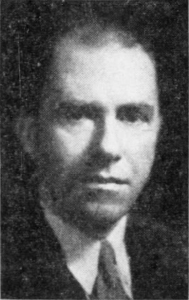
Photo info …
Credit: Indianapolis NewsView Source
(Oct. 23, 1891-Oct. 16, 1959). Born in Indianapolis, Hahn attended Indianapolis Public School no. 32 and before graduating from Wabash College in 1913. After teaching chemistry at Shortridge High School (1914-1915), Columbia University (1915-1916), and Indiana University (1916 -1917), he was graduated cum laude from the (IUSM) and awarded the Marcus Ravdin Medal, the school’s highest award for scholarship, in 1920. Upon graduation, Hahn entered private practice in Indianapolis.
From 1920 to 1922, he continued his training at IUSM’s Robert Long Hospital, and from 1922 to 1927 he was an instructor in surgery at his alma mater. In 1925, Hahn also became a professor of surgery at the Indiana University School of Dentistry. He and Elizabeth Gillespie, then an intern at Long, made an important discovery about the nature of sickle cell anemia in 1927. They found that red blood cells sickled when oxygen was removed from them but concluded that “that the only specific cause for active sickle cell anemia is the unique hereditary anomaly of the red corpuscles which predisposes to it.” This discovery eliminated other hypotheses about the characteristics of the disease and led to better understandings about how to treat it.
Following World War II, Hahn became clinical professor of psychiatry at IUSM. During his career, he also served as neurosurgeon to the Indianapolis , consulting surgeon to the Sunnyside Sanatorium (for patients with advanced tuberculosis), staff member at , and president of the medical staff of .
He was on the boards of examiners of the American Psychiatric Association and American College of Surgeons and served as an officer of the Central Neuropsychiatric Association. From 1953 to 1955, Hahn served on the governor’s medical advisory board and took an active role in the administration’s program to improve the state’s mental hospitals.
Hahn was awarded the honorary degree of Doctor of Science by Wabash College in 1937. He was a member and former president (1946-1947) of the , a fellow of the American Medical Association, a member of both the , and a member of the Indianapolis Society of Neurology and Psychiatry.

Help improve this entry
Contribute information, offer corrections, suggest images.
You can also recommend new entries related to this topic.

